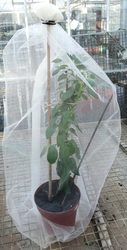Why are we interested in your garden bees?
Urban areas can be surprising havens for all sorts of wildlife, be it blue-tits feasting on leftover puddings, ladybirds overwintering in window-frames, or hedgehogs on slug-patrol in the borders. Gardens and allotments, with their carefully-maintained long periods of flowering, offer particularly important habitats, especially for insects and other invertebrates.
Pollination by insects is very important for many of the UK’s major crops, and concerns about current declines in bee populations, along with their ecology and conservation, are increasingly common in newspaper headlines. But while the insect contribution to agriculture is being investigated, the role these same creatures play in our urban environments shouldn’t go overlooked. Peas, beans, courgettes, tomatoes, apples, strawberries and many other garden favourites rely on insect pollination to some extent, and a loss of bees in gardens would be a huge problem as well.
 The idea behind this project is to do a simple experiment, measuring how much pollination activity bees are managing across the country, and see if anywhere seems to be running low. The project method compares:
The idea behind this project is to do a simple experiment, measuring how much pollination activity bees are managing across the country, and see if anywhere seems to be running low. The project method compares:
• Plants that are covered in a fine net, to keep out pollinators.
• Plants that are hand pollinated, to make sure that all the flowers are definitely pollinated.
• Plants that are left alone, free to the attentions of the local insects.
The plants used for this experiment are broad beans, and a flowering radish (the 'rat-tailed' radish). Both are easy to grow, with the dwarf variety of bean reaching an easily-manageable 50cm in height (rather than the several metres achieved by some of its ganglier cousins); the radishes are a little taller, but will not take up huge amounts of space. The flowers of both plants are attractive – to both bees and the eyes – and easy to hand-pollinate; plus we will be providing suggestions with what to do with your tasty pods at the end of the experiment.
The number and weight of the pods and beans / radish seeds are collected and compared across the country, seeing how well bees are doing at their pollinating. There are a couple of other things to count as part of the experiment – keeping an eye out for which visitors are present, and if any of them are cheating at the role – but the pod / seed counts are the most important.